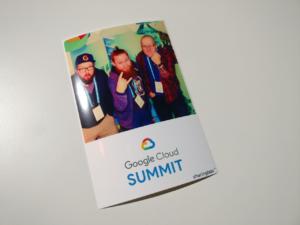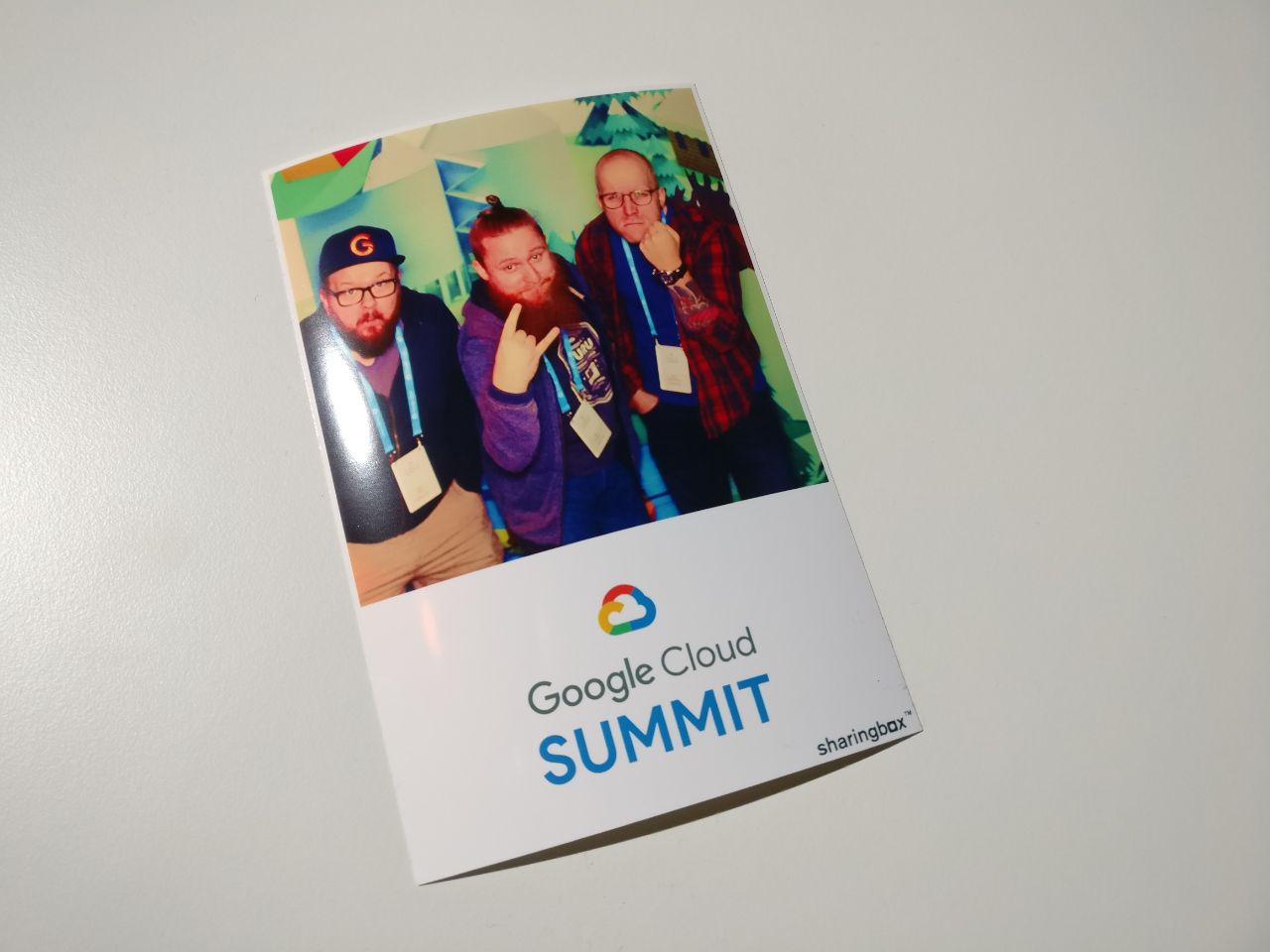On Tuesday 13th November our strike force of four of Tampere’s Gofore cloud experts headed to Kistamässan – Stockholm’s own version of Silicon Valley. With registrations made a month prior, we were eager to learn new things about Google Cloud, especially in the area of Kubernetes. This blog is a short and completely subjective report of what happened at the summit.
Keynote

As with all summits, we started with a keynote. This particular keynote was almost half an hour late which was a bummer, but understandable as some 2000 people were entering the room through two flimsy doors (talk about production bottlenecks). During the opening session, I think they walked in 8 different speakers (with a few making multiple appearances), but I have to admit that I lost count at some point. Altogether there was very little of what could be considered new information, it served as more of a primer for the different tracks forming the core of the summit which were:
- modernize my infrastructure (hybrid cloud/IaaS/PaaS)
- accelerate application development (serverless/kubernetes)
- create intelligence from data (ML)
- transform how teams work (Google Suite).
The message was clear though: in order to not get left behind in the evolving IT landscape, you have to embrace cloud.
I have to admit that I totally lost my concentration around two thirds into the session, but the presentations made by the first few Google employees left a good impression. Out of the tracks presented I chose to stick with ”Accelerate application development”, as it was of most relevance to me. Yay for Kubernetes!
Accelerate application development – Building Serverless applications
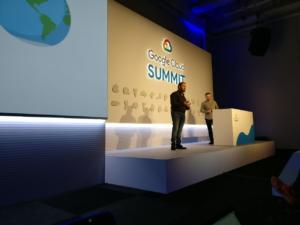
The first session after the keynote was an entry-level introduction to what is serverless. Surprisingly McDonald’s (which didn’t strike me as a tech company, but isn’t every company a tech company nowadays?) did a joint presentation with Apegroup on how they created a global microservice architecture application using Google’s App Engine. Previously it took McDonald’s 18 months to get a new product into a single market, now with a smaller team they can get a product into 42 markets in the same time. The takeaway here (pun intended) was that big companies can, and should, utilize smaller software companies’ competence and agility in modern software development.
Accelerate application development – CI/CD pipelines in the cloud
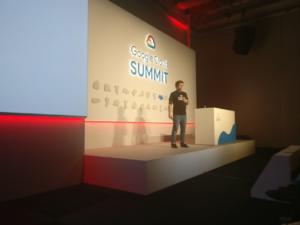
The next session was left with the task of catching up on lost time, which showed in the speed that the slides flew by. The elevator pitch for this session was “Companies should be in the business of building features for users, not configuring and maintaining developer tooling”. I want this phrase emblazoned on our office wall! Google’s products to do CI/CD were introduced and they were:
- Cloud Source Repositories
- Basically, a private Git repo hosted on GCP which can be synched with an existing Git repo
- Cloud build
- Hosted build execution on GCP for building container images or non-container artefacts
- Spinnaker
- Open source continuous delivery platform
- Multi-cloud CD platform
- Grafeas
- Store, query & retrieve critical metadata about software artefacts
- easlity add new metadata types and providers
- query all metadata across all of your components in real time
- Vulnerability scanning
- Check your containers for vulnerabilities
- Create policies that dictate which kind of images can go through your pipeline
The presentation ended with a demo of the Stackdriver Incident Response and Management tool (still in Alpha) which seemed like a viable solution for incident management on an app hosted in GCP. Another new product showcased was Stackdriver Profiler (in Beta) that gives an insight into what is happening in the code. The demo actually got me excited for the first time during this whole event, especially the part where Stackdriver Incident Response and Management showed an automatic correlation on a web page running slow and kubernetes cluster status. I want to try that product on some future project!
Accelerate application development – Best practices for securing virtualized and Kubernetes managed workloads on GCP (Palo Alto)
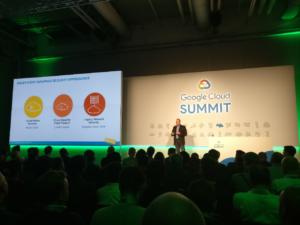
This session started with a talk which was kind of similar to AWS’s DDoS Whitepaper but with GCP terms and a few specialities such as GCP shared VPC. You might guess based on the sponsor that the session was oriented on threats and networking, which it was. Little to bring home back with me though.
Accelerate application development – Let go of your VM – Containers & Kubernetes, the next generation
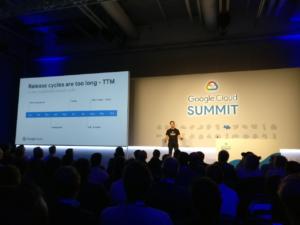
I really hoped that I would have read the session description before queuing 10min to get back to my seat. In this session, it was explained thoroughly what is a microservice, what is kubernetes, what are containers and when you should use them. If you are still new to these terms, I think this kubernetes comic does the explanation quite well.
Accelerate application development – Kubernetes & Istio: the efficient approach to well-managed infrastructure
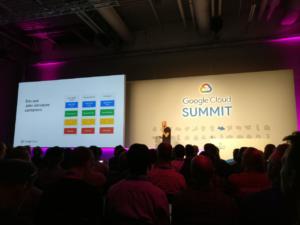
What is Kubernetes & what is GKE. At the end of the session, there were a few selling points of Istio.
Accelerate application development – Cloud security
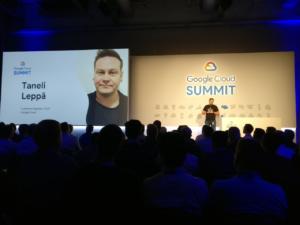
This session was a quick look into Google cloud’s security. There was also a note about the importance of using security keys as a part of MFA-strategy (no security breaches in Google after implementing them). For me, the interesting part of this presentation was the case example from Mehiläinen. The interesting part wasn’t the architecture, or the application running in google cloud, but how Mehiläinen stored PII data in Google Cloud in the Finnish region (in Hamina). If I remember correctly they compared the Hamina data centre to their competitor’s located in Helsinki and hosted by a Canadian company, and noted that most probably the Hamina datacenter is way more secure. Also, it was mentioned that they couldn’t move some of their production load to GCP yet, as the Finnish region’s data is routed through Sweden giving latencies too big for production use, but this would be fixed in the near future. Probably the best session, and I’m not just saying that because both of the presenters were Finns.
Venue and organization
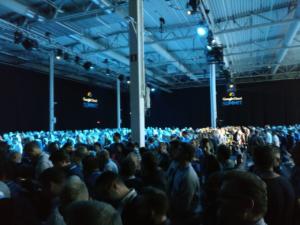
When we arrived at the site there seemed to be an excessive amount of venue employees everywhere. After about two thousand more people arrived things changed: serendipity walked out of the room (and took all the liquids other than coffee with her) and you had to stand in line for everything. It wasn’t super bad, but things could have run smoother, and eating on the floor wasn’t especially thrilling. Stands were few in number, and I think the vendors on those stands got great value for their money visibility-wise (note to self: next time buy a spot).
In Summary
Like all cloud summits, this one worked as a good primer for your cloud quest on this particular platform. All the sessions were explained in such a way that even a complete newbie could grasp what was going on (even the term ’microservice’ was explained on slides). Organisation wise I’ve seen better events, and also worse, this one falls into the category of ’pretty good’. Because of the lack of learning experiences, this was most probably the last cloud event I will act as an observer, apart from grand events such as RE:Invent or Google Next. The big ones go wayyyy deeper into technicalities and are thus better suited for me. I might consider a local summit, but that would mean concentrating solely on socializing and collecting swag.
